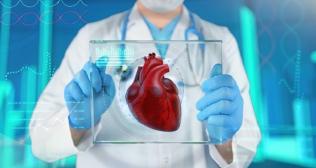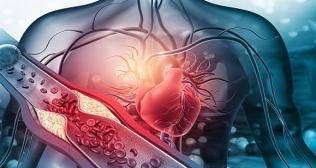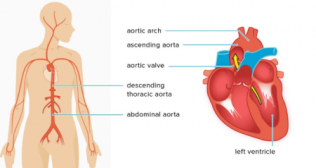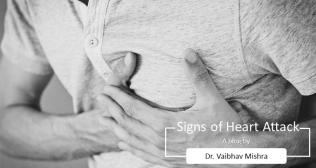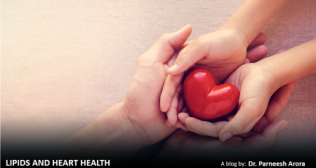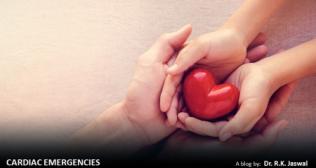Is Chest Pain Normal? Learn About Various Underlying Causative Factors And Why Timely Treatment Helps
The word chest pain is scary, and if someone ever mentions it wildly clutching onto the left side of the upper body, it triggers an instant cause of concern. Even a minimal amount of dull or sharp pain in the upper front of your body, above the stomach, can straightaway lead you to the thought of an impending heart attack.
And if you are wondering about other underlying causes behind that palpable pain in the chest, then this article is for you.
Contrary to the belief, not all chest pains indicate a heart attack or cardiac arrest, which can happen for various reasons. It should not be taken lightly either, and there is no iota of doubt that chest pain requires immediate medical attention.
Types of Chest Pain:
Heart-Related Pain in the Chest:
Suppose you feel a squeezing pain in the upper body region towards the left, combined with difficulty breathing and sweating. In that case, there is a high probability that it is a heart-related ailment.
It could be a heart attack or myocardial infarction caused due to blocked blood vessels restricting blood flow to the heart. Other reasons behind this intense pain include:
- Myocarditis or the inflammation of the heart muscle
- Pericarditis or the swelling of the sac around the heart
- Cardiomyopathy, the disease of the heart muscle
- Though rare, aortic dissection involves a tear in the inner layer of the main artery, aorta
Respiratory Reasons:
The symptoms of weaker lungs often mimic heart-related ailments and need immediate attention. Lungs are a vital organ located close to the heart in the upper cavity of the human body, and even a minor disruption can leave one rasping for breath, reeling under intense pain in the chest.
Common lung conditions include pneumonia, viral bronchitis, bronchospasm, or tightness in the chest region in patients with asthma or Chronic Obstructive Pulmonary Disease (COPD). These health conditions often present with troubled breathing, severe muscle pain and a sudden onset of chest pain.
In case of Pulmonary embolism or a blood clot and pulmonary edema, the patient needs emergency, highly advanced medical care or it could be fatal. Chest pain is often reported by patients who have lung cancer, undergoing chemotherapy and other treatments for cancer.
Another significant respiratory ailment is pneumothorax, when a part of the lung collapses, letting the air into the chest cavity. This causes immense pain with every inhalation and lower blood pressure.
Gastrointestinal Chest Pain:
One of the common causes of chronic chest pain is acid reflux, often related to consuming food in large quantities. Other causative factors are structural and functional problems in the esophagus like esophageal hypersensitivity, esophageal perforation or rupture, gallstones in the gallbladder, and hiatal hernia.
In case you are experiencing chest pain regularly and the doctor has ruled out heart ailments. In that case, it’s time to pay attention to eating habits or see a gastroenterologist for an accurate diagnosis.
However, not all gastrointestinal issues can be treated with medication and lifestyle changes. If the pain persists, get tested for anomalies related to the gallbladder, pancreas, and colon, as these health conditions may need urgent surgical intervention.
Other Reasons For Chest Pain:
Severe pain in the left side of the chest could result from fractured ribs and sprained or torn muscles in case of accidents.
Costochondritis or swelling of the cartilage in the breastbone linking the ribs can cause intense pain.
Patients suffering from lung cancer experience regular episodes of pain in the chest region.
Panic attacks and anxiety attacks are common phenomenon these days and often replicate the symptoms of a heart attack.
Chest Pain Diagnosis:
Severe chest pain has to be treated swiftly, and your doctor may run various diagnostic tests to zero in on the exact causative factor. In case of heart-related problems, an ECG, correlated with blood work to measure the enzyme levels, would understand the heart attack that happened, allowing the doctor to act quickly with the right treatment plan. It is treated with an angiogram for clearing blocked arteries or other surgical, minimally invasive methods for a faster, fuller recovery.
Lung related ailments would require imaging tests like chest x-ray, MRI, and CT-Scan co-related with blood tests. If not addressed on time, gastrointestinal issues can lead to various other complications. Imaging tests help in accurate diagnosis. For emergency medical care, reach out to your nearest hospital. For more information on precise diagnosis and treatment for chest pain, contact, Fortis Bangalore:







